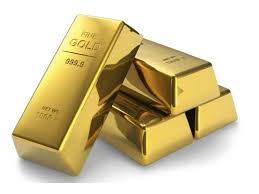Gold, often referred to as “the king of metals,” has captivated human imagination for millennia. Its rarity, unique physical properties, and deep cultural significance τιμη χρυσου 14κ ανα γραμμαριο σημερα made it a symbol of wealth, power, and status across civilizations. Yet beyond its dazzling beauty, gold is also a resource that holds a key role in modern economies, technology, and even sustainability. This article explores gold’s fascinating journey through history, its enduring appeal, and its evolving role in the contemporary world.
The Ancient Beginnings
Gold’s story begins in the ancient world, where its lustrous, yellow hue stood out in nature’s palette. Early humans likely first encountered gold in riverbeds and veins of rock, where it naturally existed in its purest form, unlike other metals which needed to be smelted. This made it easy to collect and shaped its early reputation as a symbol of divine favor or immortality.
In ancient Egypt, gold was closely associated with the gods, and the pharaohs often adorned themselves in golden jewelry, crowns, and burial items to ensure their favor in the afterlife. The famous golden death mask of Tutankhamun is perhaps the most iconic representation of this use. For the Egyptians, gold wasn’t just a material but a sacred substance, symbolizing the eternal life of the soul.
Similarly, the ancient Greeks and Romans valued gold not only as a symbol of wealth but also for its utility in coinage. The use of gold coins revolutionized trade and finance, setting the stage for modern economies. Gold was also seen as a symbol of power in the hands of the ruling elite, a tangible representation of a kingdom’s or emperor’s wealth and influence.
The Middle Ages and the Age of Exploration
During the Middle Ages, gold continued to be a coveted treasure, often used in religious artifacts and royal regalia. The discovery of gold in the New World during the Age of Exploration in the 15th and 16th centuries intensified its significance. The Spanish conquest of the Americas led to a massive influx of gold into Europe, forever altering global trade dynamics and fueling European imperialism.
The so-called “Age of Gold” also saw the development of the first modern banking systems, particularly with the establishment of the gold standard. This system, which linked paper currency to a fixed amount of gold, became the backbone of international trade and finance for centuries. While the gold standard was ultimately abandoned in the 20th century, the concept of gold as the ultimate store of value persisted.
Gold in the Modern Era: Investment, Technology, and Sustainability
In the 21st century, gold’s appeal hasn’t waned, but its role has diversified. Today, it is primarily seen as an investment asset, particularly in times of economic uncertainty. Central banks hold vast reserves of gold as a hedge against inflation and currency devaluation, while individual investors flock to gold as a safe haven during stock market volatility or geopolitical tensions.
Gold’s value isn’t confined to wealth preservation, though. It plays a crucial role in technology and industry. Its excellent conductivity, resistance to corrosion, and non-reactive properties make it invaluable in electronics, medical devices, and renewable energy technologies. From smartphones to solar panels, gold is an essential component in the modern tech world, driving demand in ways that extend far beyond traditional jewelry or coinage.
Interestingly, gold’s association with sustainability is gaining more attention. As global efforts to combat climate change intensify, the “green” properties of gold are being explored. The metal’s recyclability is one of its most notable sustainable attributes, with gold being 100% recyclable without losing any of its properties. This has led to a growing market for recycled gold, driven by both ethical and environmental considerations. Furthermore, gold’s use in clean energy technologies, such as in fuel cells and solar cells, is helping to propel its role in the green economy.
Gold’s Role in Culture and Society
Beyond its material utility, gold has maintained a deep cultural significance. From the Olympic gold medal to the golden wedding anniversary, gold continues to symbolize achievement, excellence, and lasting commitment. Its allure is universal, transcending cultural and temporal boundaries.
Gold also plays a significant role in art and fashion, where it remains a symbol of luxury, elegance, and exclusivity. Jewelers and designers continue to innovate with gold, using it not only to create beautiful pieces but also to make statements about wealth and personal identity.
However, gold’s connection to global inequality and environmental issues is also increasingly under scrutiny. The extraction of gold can have devastating effects on local ecosystems, leading to soil degradation, water pollution, and human rights abuses in some regions. This has led to growing calls for responsible sourcing and ethical mining practices in the industry.
Conclusion
Gold’s journey through history is a reflection of human civilization itself—ever evolving, yet firmly rooted in timeless values of wealth, power, and beauty. Whether in the form of ancient treasure or the latest high-tech gadget, gold continues to shape our world. Its enduring appeal lies not only in its material properties but also in the emotional and cultural significance it carries.
As we look to the future, gold’s role in sustainability and ethical practices will likely define its legacy in the modern age. It remains to be seen how the delicate balance between its exploitation and conservation will be navigated, but one thing is certain: gold, the “king of metals,” will continue to shine brightly, a symbol of both humanity’s ambition and our connection to the natural world.


